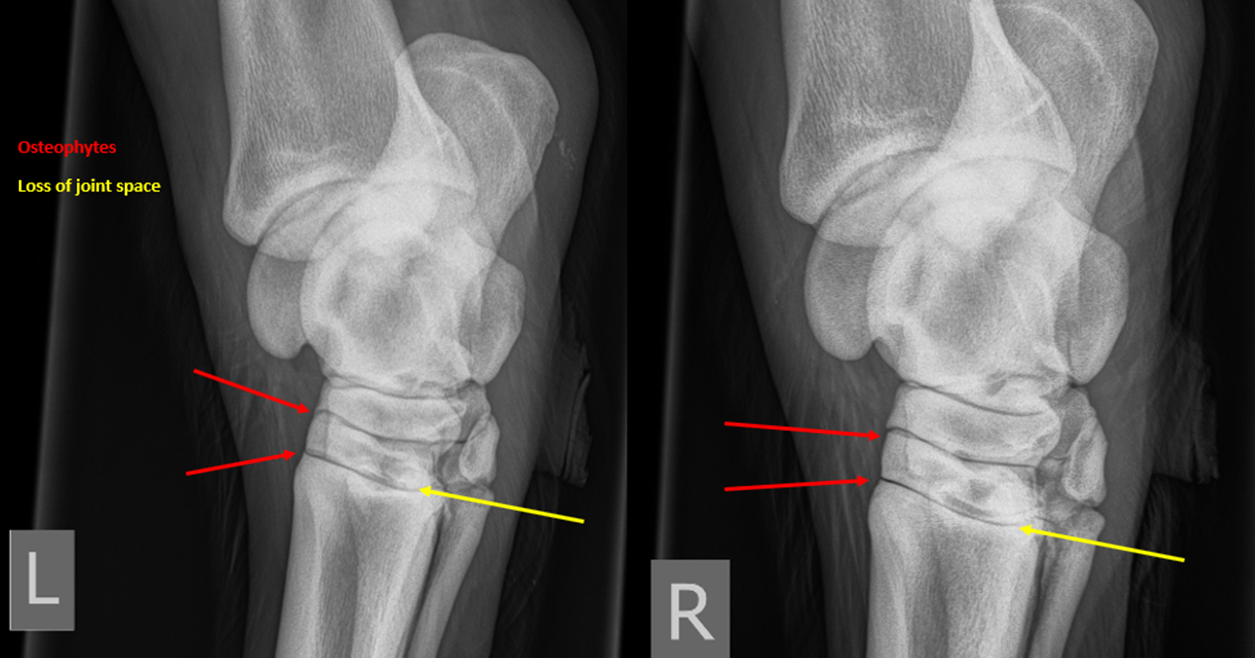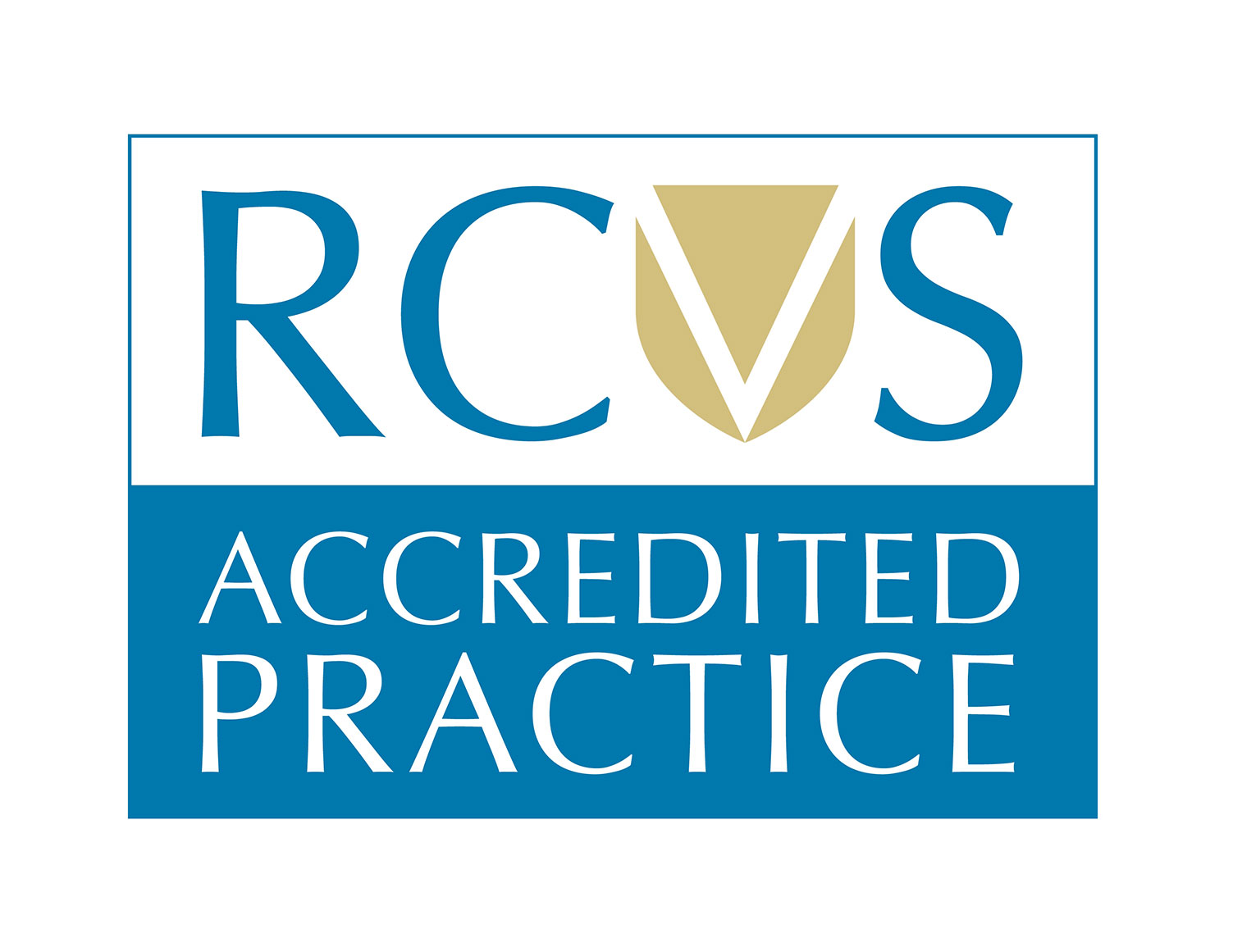Lameness can have a range of underlying causes, and it is not always the result of an injury. Conformation and way of going can also contribute to lameness. Find out how our equine vets worked with a pony’s owner, farrier and physiotherapist to diagnose and treat a case of hindlimb lameness.
Poor Performance Calls for the Vet
Poor performance - when a horse does not perform as it usually does - should be investigated by your vet. Reluctance to go forward or jump, difficulty turning and other issues when being worked under saddle or from the ground can indicate a problem.
Our client noticed that their pony was reluctant to work over his back and to go forwards during groundwork, particularly at trot. Emily went to see him, and found that he was mildly bilaterally lame in both hindlimbs.
He also had a bilateral hindlimb fetlock varus, which means that his hind pasterns are not quite set on straight to his cannon bones. This is a conformational abnormality that he would have had since birth.
In order to compensate for the pain in his hindlegs, the pony was twisting his hindlimbs, with the hocks twisting outwards when the foot contacted the ground. Because of this, and his hindlimb conformation, he was breaking over on the dorsolateral aspect of his foot, causing further wear to the outside aspect of his foot, which in turn was making the twisting worse. Irregularities in hoof growth always warrant an assessment with a vet and farrier, sometimes these irregularities are a symptom of another problem that needs addressing.
Locating the Problem
Once our equine vets have taken a detailed history and visually assessed the horse or pony, they will carry out diagnostic tests in order to determine the specific location and cause of the lameness.
In this case, both hock joints were sterile-prepped and blocked with local anaesthetic. Immediately, there was an obvious difference in the pony’s way of going. He was able to move straighter, and in a more rhythmical way. X-rays were taken of his hocks and feet, where mild osteoarthritis of his hock joints was evident.
Working Together for a Great Outcome
Often, equine vets will need to work alongside other professionals to reach the best possible outcome for the horse. In this case, the pony’s farrier and physiotherapist were involved.
A week after the initial visit, Emily went back to medicate the pony’s hocks. His physiotherapist, Charlie Coyle, helped him adapt to using a more normal gait, manage his secondary musculoskeletal pain, and work towards increasing his strength. Farrier Arron Myall reviewed the x-rays, and provided him with shoes which support his feet and reduce abnormal wear.
4 weeks later, the pony has shown a dramatic improvement in his way of going, offering correct work and forwardness more willingly. The compensatory twisting has stopped, and he is enjoying being brought back into ridden work.
Avonvale Equine Vet Practice
This is just one example of how our experienced and dedicated equine vets help our clients and their horses. We take a methodical, thorough approach to poor performance and lameness investigation and our vets have access to advanced diagnostic equipment. Register your horse, pony, donkey or mule with our independent equine vet practice today.








